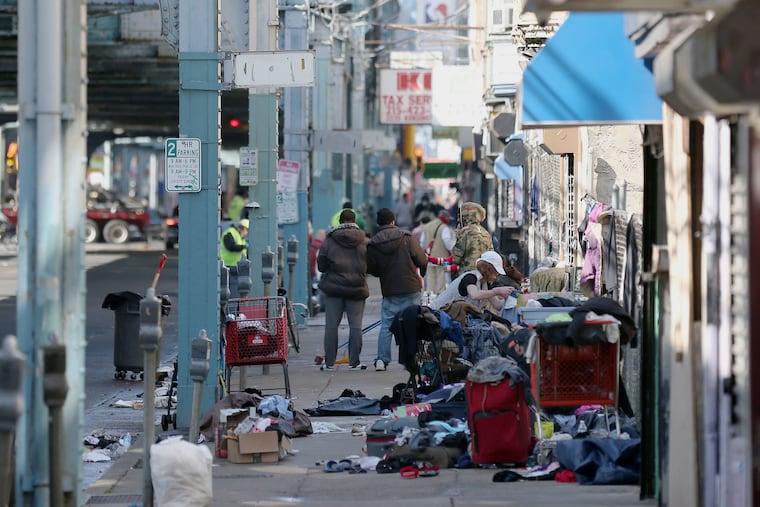How to fix Kensington’s opioid problem
We need to create a safer, more comfortable medical detox to encourage staying through that painful process.

It’s a steeping 92-degree Philadelphia Saturday in July. The humidity is suffocating, and the ice I’m lugging to fill coolers is melting rapidly, dripping off the sides and soaking my pants. People see the Savage Sisters’ purple tents and begin lining up. I inhale deeply after dropping the large bag. My senses sharpen to the smell — the metallic, spoiling, musty rot that saturates the air.
On this day, we will serve about 300 people with harm reduction kits, food, clothing, toiletries, and wound care. Volunteer nurses treat wounds that vary from gaping infections to ulcers. Many people have necrotized limbs and maggots in open wounds.
About 10 people with grabbers, bags, and needle disposal bins collect and discard trash, syringes, paraphernalia, and human waste. While the team is busy at work, I wash coagulated blood off the steps of McPherson Square Park with bleach, the remnants of a stabbing from hours prior. There are no public restrooms or showers in Kensington. Nowhere to wash your hands, and no way to clean a wound.
The city can take steps now to help fix the opioid crisis in Kensington — and those steps aren’t complicated. Kensington desperately needs a public health drop-in center. People also need restrooms, showers, laundry services, and wound care under one roof every day. This will lower the risk of infections and diseases.
Three years ago, while living at Frankford and Somerset, I started seeing a major shift in the drug supply and its effects on the community. We saw more wounds and medication to reverse overdoses took longer to work, with more people needing rescue breathing. I soon learned this was because a large and growing percentage of the dope supply contains xylazine. Xylazine is not an opioid; it is an animal-grade tranquilizer that causes skin ulcers and respiratory suppression and has high sedative effects.
As a result, our medications that help patients who are in withdrawal from opioids do not work as well when they also have xylazine in their system. This makes it much harder for people to get through the painful process of withdrawal, and they start using again.
As much as I love my work, I don’t want to have to do it anymore. I want everybody who is suffering in this public health crisis to get the help they need so that they aren’t living on the streets of Kensington, waiting in line for help in front of my purple tents.
I have detoxed off drugs many times. I will briefly describe this harrowing process.
Imagine your entire body is sweaty, damp, and freezing cold. Your limbs are aching, spasming, and you’re tremoring. It feels like ants are crawling all over you. You are dizzy and light-headed, and the headache centered between your eyes is making you squint. Your bowels are uncontrollably purging poison from the inside out, but you are too weak to get to a toilet. All your painful traumatic experiences start flashing through your head while you heave bile from your stomach as if someone is pulling on your intestines with a fish hook.
Now, take that moment and multiply it by 336 hours. Because that’s how long it takes — 14 days — to detox from xylazine. Would you be able to sit still for 336 hours with that much pain if you knew exactly where relief could come from?
» READ MORE: 100 years of dehumanizing opioid users must end | Opinion
We need to create a safer, more comfortable medical detox to help people get through that painful process. The softest detox I ever had was in a hospital setting five years ago. I was given a taper of benzodiazepine, methadone, and ketamine — exponentially more comforting than the current model. The result of properly and compassionately treating withdrawal symptoms is an increase in length of stay and more individuals getting off dangerous drugs.
I challenge city officials and medical directors in treatment centers to act now. We urgently need public health drop-in centers and updated withdrawal methods. Act for the man who may lose his leg. Act for the child hoping mommy makes it back. Act for the community that’s long been neglected. Act on behalf of the grieving parents. Act for the children exposed to horrors daily. Act for the mother dropping to her knees every night praying that God keeps her daughter in treatment long enough to see the light. Act before the casket closes.
Sarah Laurel LaCerra is the executive director of Savage Sisters Recovery.